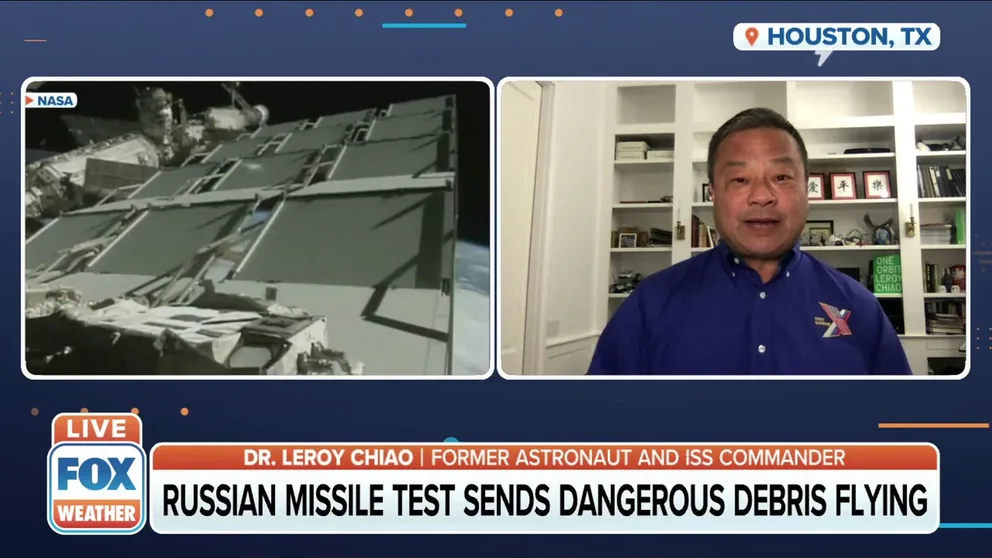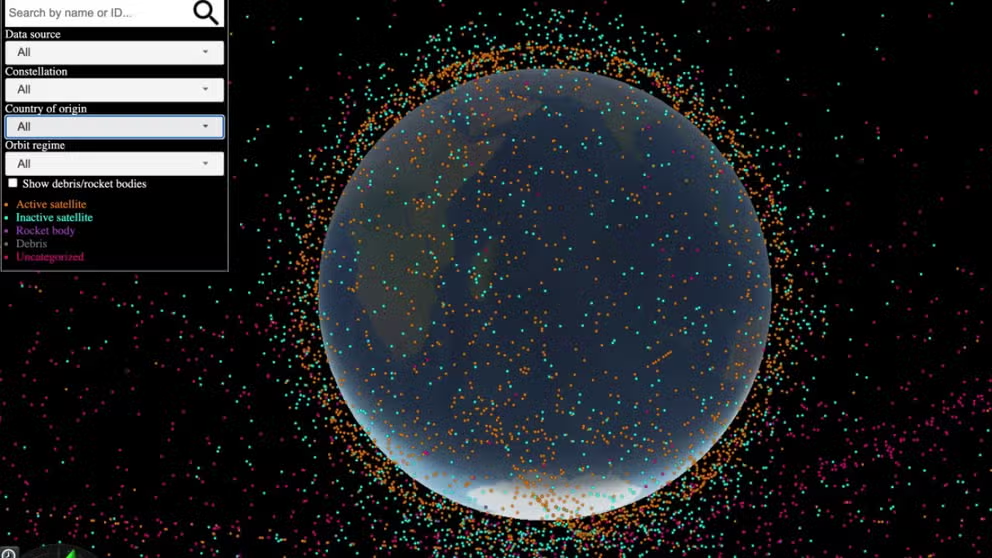Why space trash will continue to be a problem in low-Earth orbit
NASA: There are 9,300 metric tons of space junk in low-Earth orbit
Former Astronaut On The Dangers Of Space Junk
Former Astronaut Dr. Leroy Chiao talks about the dangers of space junk.
When Russia destroyed a defunct satellite in low-Earth orbit this week, creating more than 1,500 pieces of debris, it highlighted the ongoing issue of space trash.
Space junk is not a new issue for spaceflight. Nearly 30,000 pieces of space debris are being tracked by the Department of Defense's global Space Surveillance Network sensors. Some of these items include rocket hardware and defunct satellites. However, some trash is too small to be tracked.
As of April 2021, NASA estimated that all the space debris in orbit has a collective mass of 9,300 metric tons.
ASTRIAGraph is a database of active spacecraft, rocket bodies, defunct satellites and space trash created by a professor at the University of Texas Austin.
The interactive map allows you to search by satellite constellation, including the growing number of spacecraft from companies like SpaceX and OneWeb. Watch the video below to see the satellites by constellation and the overall number of objects in space.
As low-Earth orbit gets more populated, satellites have crashed into other objects in space, creating more space trash.
AstraGraph database tracks objects in space
A screen recording of the University of Texas ASTRIAGraph database of all space objects. (Credit: ASTRIAGraph/UT)
According to NASA, these pieces of space trash are moving at 15,700 mph, and an impact of even the smallest amount of trash could create problems for the space station or a spacecraft.
Collisions in space do happen, and the International Space Station frequently maneuvers out of the way to avoid any impacts.
In May, the space station's robotic arm was hit by space debris, creating a 5 mm hole in the Canadaarm2.
In 2009 an old Russian spacecraft hit a working satellite creating more than 2,300 pieces of large debris and many more pieces of smaller debris, according to NASA.
This week, the most recent incident happened when Russia destroyed one of its satellites in low-Earth orbit Monday during an Anti-Satellite (ASAT) test, creating approximately 1,500 pieces of space junk.
The seven astronauts living on the International Space Station were forced to hunker down in their spacecraft as the debris field passed every 90 minutes in the early hours of Monday. NASA, U.S. Space Command, and international partners continue to track the debris, and the astronauts are receiving updates hourly, mission control communications show.
Retired NASA Astronaut Dr. Leroy Chiao said he was shocked by Russia's test.
"They know very well the target they selected, the debris field, they had to know was going to come close to the ISS or at least cause a concern," Chiao said.
NASA, the U.K., New Zealand and other U.S. allies were quick to condemn the Russian ASAT test, calling it "reckless" and "dangerous."
Chiao said it reminded him of a similar test conducted by China in 2007 when a missile was used to destroy a defunct satellite, creating more than 3,500 pieces of space trash.
"That debris field is still orbiting, and in fact, a month or so ago, the ISS had to do a maneuver to avoid some of those pieces of debris," Chiao said. "That's our biggest concern is micrometeorites and manmade debris colliding with the spacecraft."
When things hit the space station, Chiao said the astronauts are trained to check for leaks.
When the launches first started happening, debris mitigation wasn't a significant concern. However, decades later, it is now standard practice among spacecraft operators to plan to de-orbit the spacecraft after its mission ends. Spacecraft operators
According to NASA, the lifetime requirement for any spacecraft in low-Earth orbit is 25 years after its mission ends or 30 years after launch.
NASA's Orbital Debris Program works with the Inter-Agency Space Debris Coordination Committee to limit the creation of space debris. There are also researchers and private companies developing ways to collect and de-orbit existing space trash.
The space debris problem is likely to get more complicated before it gets better.
SpaceX, OneWeb, and soon, Amazon's Kuiper Project plan to launch thousands of satellites to create global internet accessible from even remote areas. Meaning low-Earth orbit will continue to get more crowded.

